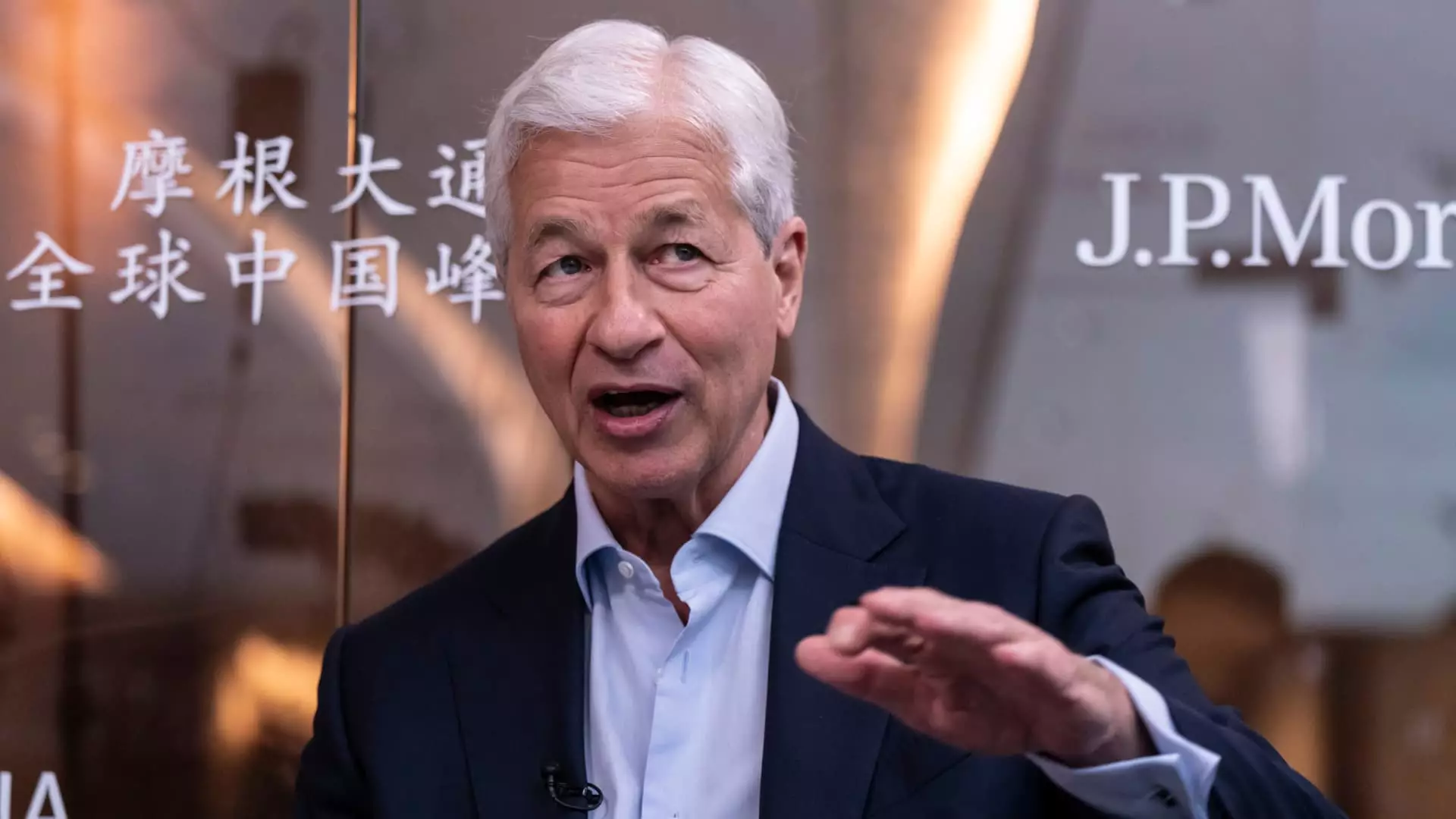As the second-quarter earnings season unfolds, the headlines paint a picture of modest growth and cautious optimism. Yet, beneath the surface, a troubling narrative emerges—one of corporate opacity, economic uncertainty, and the superficiality of recent market gains. The metrics, expected to show only a 4.8% growth in earnings across the S&P 500, conceal a deeper malaise: a fragile recovery driven more by financial engineering than genuine productivity. This season’s reporting, particularly from behemoths like JPMorgan Chase and Netflix, exposes the populist parade of economic progress that often masks systemic vulnerabilities.
The prevailing optimism is unwarranted. Earnings growth, supposedly the barometer of economic health, has been tapering off since late 2023. What’s more concerning is how several companies are resorting to aggressive cost-cutting and financial maneuvers to inflate their bottom line—strategies that often merely postpone the inevitable reckoning. The data suggest that profits are increasingly disconnected from actual consumer demand or technological advancement. Instead, they rest on familiar pillars: expense trimming, debt-financed buybacks, and increasingly opaque accounting practices. Such tactics reflect not a resilient economy but a house of cards, built on short-term gains that will falter once external shocks—such as persistent inflation, geopolitical tensions, or tighter monetary policy—resurface.
Banking Giants and Their Double-Edged Narratives
Leading the charge are the giants of finance—JPMorgan Chase, Citigroup, Wells Fargo—whose earnings reports serve as barometers but also as mirrors reflecting the entire economic landscape. JPMorgan’s expected tumble in earnings, alongside warnings of turbulence from CEO Jamie Dimon, underscores the fragility of even the most seemingly stalwart financial institutions. The reliance on relatively muted forecasts highlights an uncomfortable truth: the era of unchecked banking growth may be ending, replaced by an environment where profits are increasingly squeezed by inflation, rising interest rates, and regulatory pressures.
Adding to this complexity are the mixed signals from companies like Wells Fargo and Citigroup, which have often exceeded expectations but still face challenges from a market that’s grown overly dependent on short-term trading gains and strategic optimism. The fact that Wells Fargo’s market performance is now influenced by a removed asset cap reveals how regulatory handcuffs are being loosened just enough to sustain an illusion of recovery—without truly addressing underlying issues. Meanwhile, analysts’ adjustments of earnings estimates for Citigroup reveal internal concerns over rising expenses and provisions, hinting that even the industry’s flagships cannot escape the mounting costs of systemic volatility.
What these reports reveal is a banking sector at a crossroads—trying to sound confident, while internally battling rising expenses, regulatory headwinds, and the uncertainty of future interest rate movements. It’s a delicate dance—one in which transparency often takes a backseat to maintaining market confidence, leaving investors susceptible to shocks once the facade cracks.
The Corporate Parade of the Earnings Season: A Shell Game
The broader corporate reporting landscape is equally revealing. Companies like Johnson & Johnson and Morgan Stanley are caught between their historical performance and emerging challenges. J&J’s expected decline in earnings by nearly 5% may seem like a hiccup, but the looming threat of tariffs and geopolitical tensions suggests this is more a symptom than a cause. The Trump administration’s threats of punitive tariffs on pharmaceuticals expose how fragile this sector’s optimism truly is, further emphasizing that corporate earnings are increasingly vulnerable to political whims and trade conflicts.
Meanwhile, Morgan Stanley and Goldman Sachs are riding waves of profitability fueled by market volatility and trading revenue, but these are highly cyclical and not sustainable foundations for long-term growth. The fact that Morgan Stanley’s wealth management segment may give a boost indicates that the true strength of financial institutions is in their client relationships—yet even that strength is susceptible to broader economic tremors. Conversely, Goldman Sachs’ reliance on a booming equity trading sector signals a dependency on market conditions rather than genuine operational stability.
The danger here lies in mistaking fleeting sectoral booms for sustainable growth. When the cycle turns—inevitably—it will reveal the cracks in the veneer, and corporate earnings will prove little more than temporary mirages.
The Illusion of Tech and Consumer Resilience
Netflix stands out as a bellwether for the tech sector, with expectations of a 45% increase in earnings—yet even here, the narrative is fraught with contradiction. Tech companies have long held the mantle of innovation and resilience, but their recent performance relies heavily on subscriber growth fueled by saturation and price adjustments, not necessarily sustained demand for new content or services. The fact that investment giants warn about FX tailwinds rather than fundamental growth underscores that even the most celebrated sectors are vulnerable to macroeconomic headwinds.
Furthermore, the overall focus on earnings beats rather than genuine operational improvements reflects a troubling tendency within corporate America to prioritize short-term beats over long-term strategic health. When companies continue to report record revenues and profits while underlying consumer spending wanes or inflation erodes purchasing power, it hints at a disconnect—a superficial prosperity that could unravel in an instant.
This disconnect is central to understanding why the current earnings season is more of a wake-up call than a celebration. It exposes the illusion of economic resilience meant to buoy investor confidence, while underlying economic vulnerabilities continue to fester beneath.
Empowering Investors in an Uncertain Climate
In this landscape of strategic opacity and superficial growth, the role of the politically conscious, center-leaning investor becomes increasingly vital. While some may cling to narratives of robust economic

